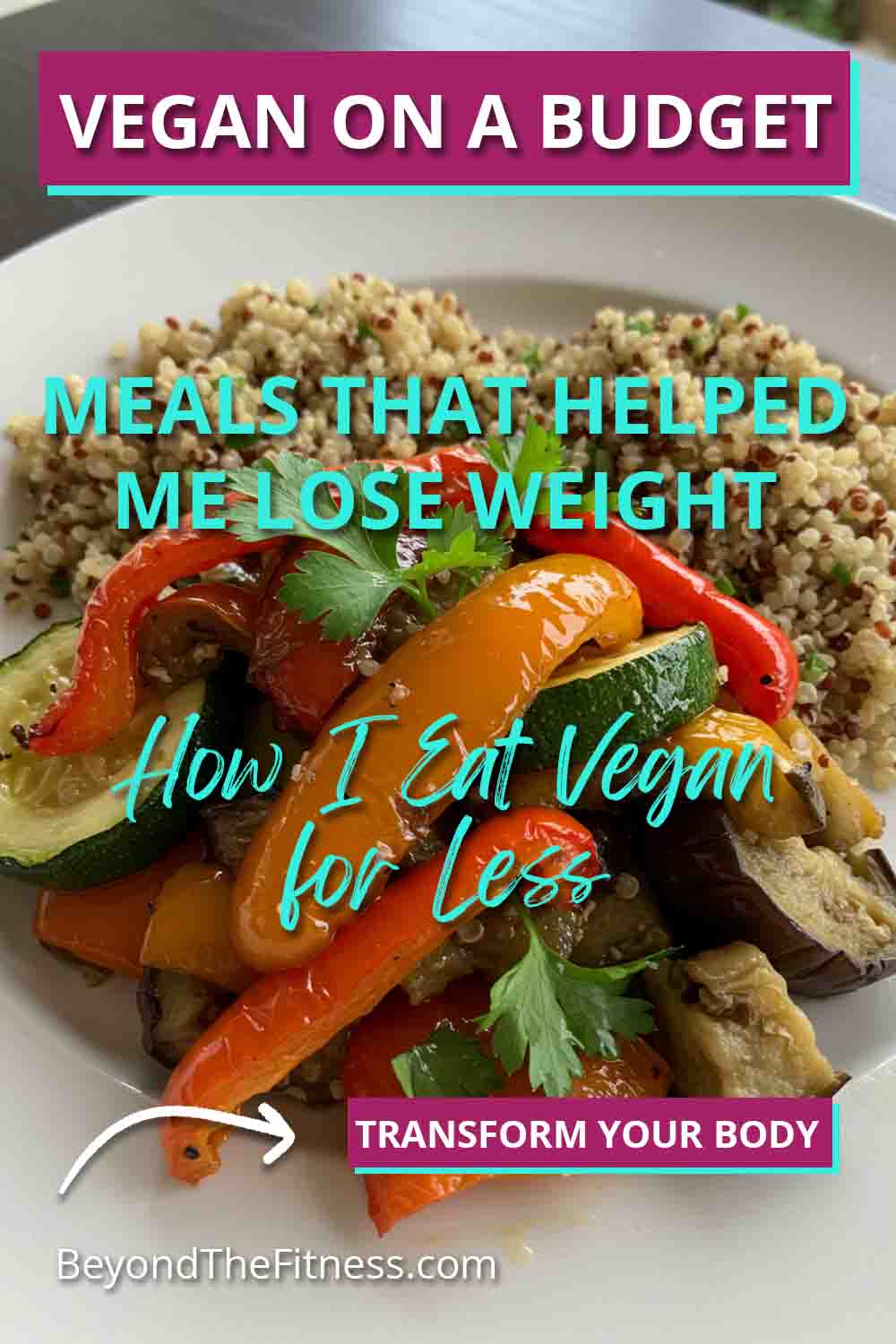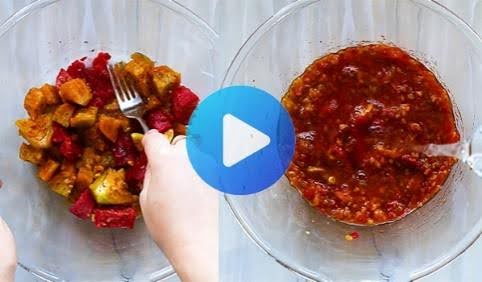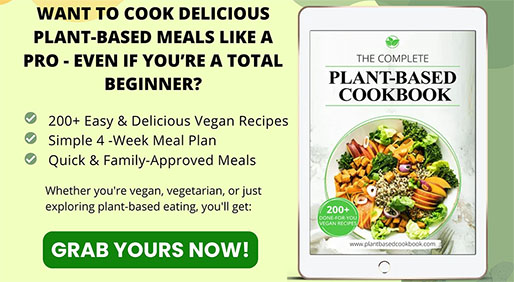Eating healthy and following a vegan lifestyle often brings up worries about cost. I hear it a lot. People think plant-based eating means spending a fortune on special products. But I want to show you that it is possible to eat delicious, healthy vegan meals without emptying your wallet. It is actually one of the smartest ways to eat for your health, your weight goals, and your bank account.
As someone focused on fitness and healthy weight management, I know how important good food is. Fueling your body right helps you feel energized, manage cravings, and reach your goals. Going vegan can be amazing for this, but it needs to be done thoughtfully, especially when money is tight. Let’s explore how you can thrive on a budget-friendly vegan diet.
Why Eating Vegan on a Budget Makes Sense
Choosing affordable vegan foods is smart for many reasons. First, whole plant foods are packed with nutrients your body loves. Think fiber, vitamins, and minerals. Fiber is super important. It helps you feel full after meals, which is great if you are watching your weight. It also helps keep your digestion running smoothly. Eating lots of plants means you are getting a wide range of vitamins that support everything from your energy levels to your immune system.
Insider Tip: Enjoying Healthy and Flavorful Plant-Based Dishes with The Complete Plant Based Recipe Cookbook
Second, focusing on budget vegan staples can save you a lot of money. Meat, dairy, and processed foods often cost more than simple beans, lentils, rice, and vegetables. When you build your meals around these affordable basics, your grocery bill can shrink quite a bit. This frees up money for other things, maybe even some new workout gear or a fitness class.
Third, eating more plants is good for the planet. While that might not be your main goal, it is a nice bonus. Knowing your food choices have a positive impact can feel really good.
For women managing their weight, a budget vegan approach offers specific benefits. The high fiber content helps regulate blood sugar levels. This means fewer energy crashes and potentially fewer cravings, especially around certain times of the month. Getting enough nutrients like iron from plant sources is also key for energy, which you need for workouts and daily life.
Building Your Budget Vegan Pantry
Having the right foods on hand makes cooking easy and affordable. You do not need fancy ingredients. Focus on these simple, cheap, and healthy staples.
Legumes: The Powerhouses
Beans, lentils, and chickpeas are your best friends on a budget vegan diet. They are incredibly cheap, especially if you buy them dried instead of canned. Dried beans and lentils just need a soak and some cooking time, but they cost pennies per serving.
- Why they are great: They are packed with protein and fiber. Protein helps you build and maintain muscle, which is important for metabolism, especially during weight loss. Fiber keeps you full and satisfied. They also provide iron, which helps carry oxygen in your blood and keeps you from feeling tired.
- Types to buy: Black beans, kidney beans, pinto beans, chickpeas, red lentils, green lentils, brown lentils. Get a variety.
- How to use them: Add them to soups, stews, chilis, salads, curries. Mash chickpeas for sandwiches. Make lentil loaf or burgers. Blend beans into dips.
Grains: Energy and Fullness
Whole grains provide steady energy and more fiber. They are also very affordable.
- Why they are great: They give you carbohydrates for energy, which you need to power through your day and your workouts. The fiber helps with fullness and digestion.
- Types to buy: Brown rice, oats (rolled oats are super cheap), whole wheat pasta, quinoa (can be a bit pricier, buy in bulk when on sale), barley.
- How to use them: Rice as a base for bowls and stir-fries. Oats for breakfast porridge or in homemade energy bars. Pasta with simple sauces. Quinoa in salads or as a side dish.
Vegetables: Color and Nutrients
Vegetables are essential for vitamins and minerals. You do not need expensive organic or out-of-season produce.
- Why they are great: They are low in calories but high in nutrients. Eating a variety of colors ensures you get different vitamins and antioxidants.
- Types to buy: Focus on what is cheap and available. Potatoes (white and sweet), onions, garlic, carrots, cabbage, celery are usually budget-friendly year-round. Frozen vegetables are amazing – peas, corn, spinach, broccoli, mixed veggies. They are picked at their peak ripeness and frozen, so they keep their nutrients and are often cheaper than fresh, especially in winter. Canned tomatoes (diced, crushed, paste) are pantry heroes.
- How to use them: Add them to everything. Soups, stiles, stir-fries, pasta sauces, curries, bowls. Roast potatoes and carrots. Steam frozen veggies. Use cabbage in slaws or stir-fries.
Fruits: Natural Sweetness and Vitamins
Fruits provide vitamins and natural sweetness. Again, focus on affordable options.
- Why they are great: They satisfy a sweet tooth healthily and provide vitamins like Vitamin C.
- Types to buy: Bananas are almost always cheap. Apples and oranges can be affordable depending on the season. Buy seasonal fruits when they are cheaper (like berries in summer). Frozen fruits (berries, mango, peaches) are perfect for smoothies and often cheaper than fresh, especially out of season.
- How to use them: Eat them as snacks. Add bananas or frozen berries to oatmeal or smoothies. Slice apples into salads.
Tofu and Tempeh: Plant-Based Protein
Tofu and tempeh are great sources of plant protein. Their price can vary, but basic, firm tofu is often quite affordable, especially if bought from Asian grocery stores.
- Why they are great: They provide complete protein, meaning they have all the essential amino acids your body needs. They are versatile and take on the flavors you cook them with.
- How to use them: Crumble firm tofu for scrambles. Cube and bake or pan-fry tofu or tempeh to add to stir-fries, salads, or bowls. Blend silken tofu into smoothies or sauces for creaminess.
Nuts and Seeds: Healthy Fats (in Moderation)
Nuts and seeds offer healthy fats, protein, and other nutrients. They can be pricey, so buy wisely.
- Why they are great: Healthy fats are important for hormone health and absorbing certain vitamins. They also add staying power to meals.
- Types to buy: Sunflower seeds and pumpkin seeds are usually cheaper options. Peanut butter is a budget staple. Buy nuts like almonds or walnuts in bulk from stores with bulk bins, and only buy what you need to avoid waste. Flax seeds and chia seeds are great for omega-3s and can often be found affordably.
- How to use them: Sprinkle seeds on oatmeal or salads. Use peanut butter in sauces or on toast. Add a small handful of nuts as a snack. Use ground flax or chia seeds in smoothies or as an egg replacer in baking.
Plant Milks: Calcium and Convenience
Store-bought plant milks can add up. Look for store brands or sales. Making your own oat milk is super cheap.
- Why they are great: Fortified plant milks provide calcium and vitamin D, important for bone health.
- Types to buy: Unsweetened soy, almond, or oat milk. Check labels for fortification.
- How to use them: In oatmeal, smoothies, coffee/tea, sauces, baking.
Spices, Herbs, and Flavor Boosters
Flavor is key to enjoying your food. Building a good spice collection is cheaper than buying pre-made sauces.
- Why they are great: They add taste without adding significant calories or cost per serving.
- Types to buy: Salt, pepper, garlic powder, onion powder, cumin, chili powder, paprika, dried oregano, dried basil. Nutritional yeast adds a cheesy flavor and B vitamins. Soy sauce (or tamari/liquid aminos), vinegar (apple cider, white), mustard, and hot sauce add punch. Buy dried spices in bulk if possible. Consider growing simple herbs like basil or parsley on a windowsill.
- How to use them: Season everything generously.
Smart Strategies for Saving Money
Knowing what to buy is half the battle. Knowing how to shop and cook saves even more.
1. Plan Your Meals
This is my number one tip for saving money and eating healthy. Decide what you will eat for the week before you shop.
- Check your pantry first: See what staples you already have.
- Look at sales flyers: Plan meals around what is on sale that week.
- Make a list: Only buy what is on your list to avoid impulse purchases.
- Think about leftovers: Plan to cook extra dinner to have for lunch the next day.
2. Shop Smart
Where and how you shop matters.
- Compare prices: Check prices at different stores if you can. Discount grocers often have great deals on produce and staples.
- Buy store brands: They are usually cheaper than name brands and often just as good.
- Buy in bulk (carefully): For non-perishable items you use often (rice, beans, oats, spices), buying in bulk can save money. Make sure you have space to store it properly and that you will actually use it before it goes bad.
- Shop seasonally: Fruits and vegetables are cheapest when they are in season locally.
- Avoid pre-cut produce: Whole fruits and vegetables are almost always cheaper than pre-chopped versions.
3. Cook from Scratch
Convenience costs money. Processed vegan foods like mock meats, frozen meals, and packaged snacks are usually much more expensive than making things yourself.
- Cook beans from dried: It takes time but saves a lot compared to canned. Cook a big batch and freeze portions.
- Make your own sauces: Simple tomato sauce, peanut sauce, or vinaigrettes are easy and cheap to make.
- Bake your own snacks: Things like muffins or energy bars can be made affordably at home.
4. Embrace Frozen and Canned Foods
Do not shy away from the freezer aisle or canned goods section.
- Frozen fruits and veggies: Just as nutritious as fresh, often cheaper, and they last much longer. Perfect for smoothies, stir-fries, soups.
- Canned beans and lentils: While dried are cheaper, canned are still affordable and very convenient for quick meals. Rinse them well to remove extra sodium.
- Canned tomatoes: Essential for sauces, chilis, and stews.
5. Reduce Food Waste
Throwing away food is like throwing away money.
- Store food properly: Learn how to best store fruits, vegetables, and leftovers to make them last longer.
- Use leftovers creatively: Turn leftover rice and beans into a wrap, or leftover roasted vegetables into a soup.
- Use the whole vegetable: Use broccoli stalks in stir-fries or soups. Save vegetable scraps (onion peels, carrot ends, celery tops) in the freezer to make vegetable broth.
6. Focus on Whole Foods
Base your meals on the staples: legumes, grains, fruits, vegetables. Limit expensive processed vegan alternatives like fancy cheeses or mock meats to occasional treats rather than daily staples. They can fit into a budget sometimes, but relying on them will increase your costs significantly.
Delicious and Cheap Vegan Meal Ideas
Okay, let’s get to the food. Here are some simple, tasty, and cheap meal ideas using those pantry staples.
Breakfast Ideas
- Oatmeal: The ultimate budget breakfast. Cook rolled oats with water or plant milk. Top with sliced banana, a sprinkle of cinnamon, and maybe some sunflower seeds or a spoonful of peanut butter. Add frozen berries for extra flavor and vitamins.
- Tofu Scramble: Crumble firm tofu and sauté it with onions, garlic, and any cheap veggies you have (spinach, peppers, mushrooms). Season with nutritional yeast for a cheesy flavor, turmeric for color, salt, and pepper. Serve with toast or potatoes.
- Simple Smoothie: Blend frozen banana, a handful of frozen berries or spinach, a scoop of peanut butter or some seeds (flax/chia), and water or plant milk. It is a quick way to get nutrients in.
- Toast with Toppings: Whole wheat toast topped with peanut butter and banana, mashed avocado (if affordable) with salt and pepper, or mashed chickpeas mixed with a little vegan mayo and celery (like a tuna salad).
Lunch Ideas
- Lentil Soup: Cook red lentils with vegetable broth (homemade or low-sodium store-bought), onions, carrots, celery, and canned diced tomatoes. Season with herbs like oregano or thyme. It is hearty, warming, and makes great leftovers.
- Chickpea Salad Sandwich: Mash chickpeas with a fork. Mix with a little vegan mayo (or tahini for a mayo-free option), chopped celery, onion, salt, and pepper. Serve on bread or in a lettuce wrap.
- Big Budget Salad: Start with cheap greens like romaine or spinach (buy in bulk). Top with canned chickpeas or black beans, cooked rice or quinoa, chopped carrots, cucumber, sunflower seeds, and a simple homemade vinaigrette (oil, vinegar, salt, pepper, mustard).
- Dinner Leftovers: The easiest lunch. Always try to make enough dinner to have leftovers.
- Bean and Rice Bowl: Simple cooked brown rice topped with black beans, salsa, and maybe some corn or leftover cooked veggies.
Dinner Ideas
- Three-Bean Chili: A classic budget meal. Use kidney beans, black beans, and pinto beans (canned or cooked from dried). Sauté onions and garlic, add canned tomatoes, beans, chili powder, cumin, and vegetable broth. Simmer until flavors meld. Serve over rice or with bread.
- Pasta with Lentil Sauce: Make a simple tomato sauce using canned tomatoes, onions, garlic, and herbs. Add cooked brown or green lentils to the sauce for protein and texture. Serve over whole wheat pasta.
- Rice and Beans: The foundation of budget eating in many cultures. Cook brown rice. Serve with seasoned black beans (sautéed with onion, garlic, cumin) and your favorite salsa. Add some steamed frozen veggies on the side.
- Loaded Baked Potatoes: Bake potatoes until soft. Split them open and load them up with toppings like bean chili, black beans and salsa, steamed broccoli with nutritional yeast, or sautéed mushrooms and onions.
- Simple Veggie Stir-Fry: Stir-fry whatever cheap veggies you have (broccoli, carrots, cabbage, onions, frozen mixed veggies) with cubed tofu or tempeh. Make a simple sauce with soy sauce, a little vinegar or lime juice, garlic, and ginger (fresh or powdered). Serve over rice.
- Lentil Shepherd’s Pie: Make a base of cooked lentils and mixed vegetables (like carrots, peas, corn) in a simple gravy (use vegetable broth thickened with a little flour or cornstarch). Top with mashed potatoes (use plant milk and a little oil or vegan butter for creaminess) and bake until bubbly and golden.
Snack Ideas
- Fresh Fruit: An apple, banana, or orange.
- Veggies and Hummus: Carrot and celery sticks with hummus (making your own hummus from dried chickpeas is very cheap).
- Roasted Chickpeas: Drain and rinse canned chickpeas. Toss with a little oil and your favorite spices (like paprika, garlic powder, salt). Roast in the oven until crispy.
- Handful of Seeds or Nuts: A small portion of sunflower seeds, pumpkin seeds, or peanuts.
- Air-Popped Popcorn: A whole-grain snack that is very inexpensive if you pop your own kernels. Season lightly.
Meeting Your Nutritional Needs
When eating vegan, especially on a budget, it is good to be aware of a few key nutrients. But do not worry, you can easily get what you need from affordable foods.
- Protein: Beans, lentils, tofu, tempeh, peanut butter, nuts, and seeds are all great sources. Eating a variety throughout the day helps you get enough.
- Iron: Lentils, beans, tofu, spinach, and fortified cereals contain iron. Eat iron-rich foods with Vitamin C sources (like oranges, bell peppers, tomatoes) to help your body absorb it better.
- Calcium: Fortified plant milks and juices, tofu (made with calcium sulfate), leafy greens (like kale and collard greens), broccoli, and almonds provide calcium.
- Vitamin D: Your body makes Vitamin D from sunlight. Fortified plant milks and some mushrooms also contain it. Depending on where you live (like here in Toronto where winter sun is weak) and your sun exposure, a supplement might be needed, especially in winter months. Talk to your doctor.
- Vitamin B12: This is important for nerve function and blood cells. It is mainly found in animal products. Vegans need a reliable source. Fortified foods like nutritional yeast and some plant milks contain B12, but taking a B12 supplement is generally the most reliable way to ensure you get enough.
- Omega-3 Fatty Acids: Flax seeds, chia seeds, hemp seeds, and walnuts are good plant sources of ALA, a type of omega-3. Your body can convert some ALA into EPA and DHA (the types found in fish), but the conversion rate can be low. Consider adding ground flax or chia to your diet daily. An algae-based EPA/DHA supplement is also an option if needed.
Focusing on a variety of whole, plant-based foods usually covers most of your bases. Nutritional yeast is great for B vitamins and cheesy flavor, and fortified foods help fill gaps.
Making Budget Vegan Work for Weight Loss
Eating vegan on a budget aligns perfectly with healthy weight management goals, especially for women. Here is how:
- High Fiber: All those beans, lentils, whole grains, fruits, and veggies are packed with fiber. Fiber fills you up, keeping you satisfied on fewer calories. This helps control appetite and reduce overall calorie intake naturally. Steady blood sugar from fiber also helps manage cravings.
- Lower Calorie Density: Whole plant foods generally have fewer calories for their volume compared to animal products and processed foods. You can eat satisfying portions without consuming excess calories.
- Nutrient-Rich: Getting plenty of vitamins and minerals supports your metabolism and energy levels, making it easier to stay active. Iron is particularly important for energy.
- Mindful Eating: Cooking from scratch encourages you to be more aware of what you are eating.
- Protein Power: Including protein sources like beans, lentils, and tofu in meals helps preserve muscle mass while losing fat, and protein also contributes to feeling full.
Remember, even healthy foods have calories. Portion control is still important. Use smaller plates, listen to your body’s hunger and fullness signals, and focus on building balanced meals with protein, fiber-rich carbs, and healthy fats. Combining this way of eating with regular physical activity is the foundation for sustainable weight loss and overall health.
You Might Be Interested In: Exploring Delicious Vegan Recipes With This Cookbook
Eating vegan does not mean spending more. By focusing on affordable staples, planning your meals, shopping smart, and cooking at home, you can enjoy delicious, satisfying, and incredibly healthy food that supports your fitness goals and respects your budget. It takes a little planning, but the benefits for your health, wallet, and well-being are totally worth it.
Related YouTube Video
Final Thoughts
Making the switch to more plant-based meals, or going fully vegan, can feel like a big step, especially when you are watching your spending. But as we have explored, it is entirely possible to eat well without breaking the bank. The key lies in embracing simple, whole foods. Beans, lentils, rice, oats, seasonal vegetables, and fruits are nutritional powerhouses that cost very little. Planning your meals, cooking from scratch, and minimizing food waste are powerful tools in your budget toolkit. This way of eating not only helps your finances but also greatly benefits your health, providing fiber, vitamins, and nutrients that support energy levels and weight management. It is a sustainable way to nourish your body and feel your best.







